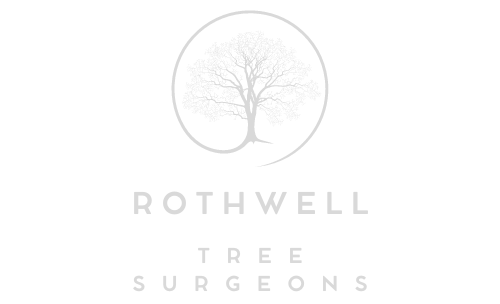How Incorrect Pruning Can Shorten a Tree’s Lifespan
Pruning is an essential part of tree care, ensuring healthy growth, structural integrity, and aesthetic appeal. However, improper pruning can do more harm than good, potentially weakening a tree and significantly shortening its lifespan. For property owners in Rothwell, Northamptonshire, understanding the risks associated with incorrect pruning is key to maintaining strong, long-lasting trees.
Why Pruning Is Essential for Tree Health
Pruning helps trees by:
- Removing dead or diseased branches.
- Encouraging healthy growth and balanced structure.
- Reducing the risk of storm damage.
- Improving air circulation and sunlight penetration.
However, when done incorrectly, pruning can cause irreversible damage, leading to disease, decay, or structural instability.
Common Mistakes in Tree Pruning
1. Over-Pruning or Topping
One of the most harmful pruning mistakes is excessive removal of branches, known as “topping.” This involves cutting off large sections of the upper canopy, which can:
- Remove too much foliage, reducing the tree’s ability to produce energy through photosynthesis.
- Lead to sunscald, where exposed bark becomes damaged from excessive sunlight.
- Cause weak, rapid regrowth that is structurally unstable and more prone to failure.
Trees that are repeatedly topped often develop decay and die prematurely.
2. Incorrect Timing
Pruning at the wrong time of year can stress a tree or leave it vulnerable to pests and disease. Common timing mistakes include:
- Pruning during active growth (spring/summer) – This can weaken the tree and reduce energy reserves needed for seasonal development.
- Pruning in late autumn – Open wounds take longer to heal in cold conditions, increasing the risk of fungal infections.
- Ignoring species-specific needs – Different trees have different pruning cycles. For example, fruit trees benefit from winter pruning, while spring-flowering trees should be pruned after they bloom.
3. Using Incorrect Cutting Techniques
Poor cutting methods can leave a tree vulnerable to disease and decay. Common errors include:
- Flush cuts – Cutting too close to the trunk removes the natural protective tissue, preventing proper wound healing.
- Stub cuts – Leaving too much of a branch behind creates deadwood, which attracts pests and fungi.
- Ragged cuts – Using blunt or improper tools results in uneven cuts that take longer to heal.
4. Removing Too Many Lower Branches
Lower branches provide stability and distribute weight evenly. Removing too many, especially on young trees, can lead to:
- Weak, unbalanced growth that increases the risk of splitting.
- Higher exposure to wind damage.
- Reduced energy production, leading to slower development.
5. Pruning Without Assessing the Tree’s Health
Some trees may already be stressed due to environmental conditions, disease, or pests. Aggressive pruning in these cases can worsen their condition. Before any cutting, it is essential to:
- Inspect for signs of disease or decay.
- Consider the age and growth pattern of the tree.
- Use professional expertise to determine the best approach.
The Consequences of Incorrect Pruning
Improper pruning doesn’t just affect a tree’s appearance—it can have serious long-term consequences:
1. Increased Vulnerability to Disease and Pests
Open wounds and poor pruning cuts provide entry points for fungal infections and insect infestations, accelerating tree decline.
2. Weak Structural Integrity
Trees that experience poor pruning may develop weak, poorly attached branches that are prone to breaking during storms or high winds.
3. Stunted or Abnormal Growth
Badly pruned trees may develop unpredictable growth patterns, leading to imbalanced canopies and structural instability.
4. Premature Tree Death
A tree that suffers repeated poor pruning may not recover, leading to its decline and eventual removal.
Best Practices for Proper Pruning
To ensure pruning benefits rather than harms a tree, it’s essential to follow best practices:
1. Prune During the Right Season
- Late winter or early spring is often the best time for pruning, before new growth begins.
- Some trees require species-specific timing—always research before cutting.
2. Use the Correct Cutting Techniques
- Make clean, precise cuts to minimise stress.
- Cut just outside the branch collar (the swollen area where the branch meets the trunk) to allow proper healing.
- Avoid leaving stubs or making flush cuts.
3. Remove Only What’s Necessary
- Follow the one-third rule: never remove more than one-third of the tree’s canopy in a single pruning session.
- Prioritise dead, diseased, or dangerous branches.
4. Hire Professional Tree Surgeons
Professional tree care ensures:
- Proper assessment of a tree’s health.
- Correct pruning techniques that promote long-term growth.
- Compliance with local regulations and conservation laws.
Conclusion
Incorrect pruning can significantly shorten a tree’s lifespan by exposing it to disease, weakening its structure, and reducing its ability to thrive. For property owners in Rothwell, Northamptonshire, working with professional tree surgeons ensures that pruning is done safely and effectively, promoting healthy, long-lived trees.
If your trees require expert pruning or you’re unsure about the best care approach, contact Rothwell Tree Surgeons. Our team provides tailored tree maintenance solutions to keep your landscape safe and thriving.
Call us on: 01536 903 994
Click here to find out more about Rothwell Tree Surgeons
Click here to complete our contact form and see how we can help with your tree needs.

